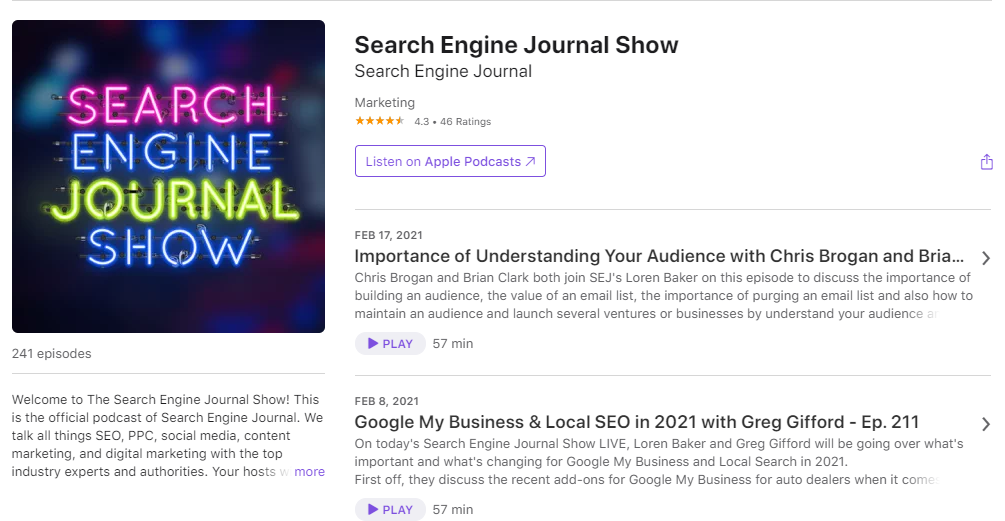Content Marketing Guide: Build a Winning Content Strategy
Content is king.
These words belong to Bill Gates, who predicted back in 1996 that content would govern the digital world in the future.
Fast forward to 2022. Content is everywhere, and it defines most digital marketing strategies.
But…is content marketing as easy as it seems? From the looks of it, all you need is your creativity and some resources to get started. In reality, though, a lot of hard work goes into creating a successful content strategy that delivers tangible results.
So, to make sure you don’t waste your precious resources, we’ve prepared a detailed guide, with all its ins and outs, on planning and executing a truly effective content marketing strategy.
Let’s begin.
Here’s what this guide for beginners covers:
- What is Content Marketing
- Types of Content Marketing
- B2B vs. B2C Content Marketing
- How to Design a Content Strategy in 7 Steps
- Common Content Promotion Techniques
- Basic Content Marketing Metrics
- Best Content Marketing Blogs
What is content marketing?
Content marketing is a type of marketing approach focused on creating and sharing relevant online assets in various forms (articles, videos, social media posts, etc.) to attract, convert, and retain a specific audience.
There are two general types of content marketing—traditional and digital.
The traditional type includes content distributed through traditional media: newspapers, magazines, radio, television, etc. This content marketing strategy targets a defined audience offline.
On the other hand, digital or web content marketing focuses on reaching their audience online and centers around producing blog posts, videos, or social media posts. In this article, we’ll explore digital content marketing.
Why is content marketing important?
If done right, you can think of content marketing as a tool to bridge the gap between your business and your audience.
It makes sense—before anyone decides to buy from you, they need to trust you. Hence your initial mission should be to establish a good rapport with your prospects and prove the value of your product or service. This is where content marketing comes into play.
Apart from that, content marketing contributes to the following processes:
- Improvement of brand awareness
- Lead generation and nurturing
- Streamlining and increasing sales
- Expansion of the target audience reach
How do you know if your content is good? High-quality content should be:
- Authentic
- Informative
- Compelling
- Accurate
- Engaging and thought-provoking
- Actionable
We will discuss these six qualities in more detail below.
Types of content marketing
Now that you know why content marketing is crucial for your success, let’s have a look at the popular types of content and a few real-life examples for your inspiration.
1. Blog
A blog is an informational page that contains articles on different topics related to your service, product, or an industry at large.
A high-quality blog post intended for content marketing should possess a set of qualities:
- Educational. The information in the blog post should bring value to the reader.
- Pertinent. The topic of the post must be relevant to the reader and answer their questions.
- Accurate. A good blog post always provides references of credible sources in claims and statements.
- Thought-provoking. After reading the post, a person should feel motivated to take further action.
- Optimized. A high-quality blog post should be SEO-friendly, readable, and well-structured.
HubSpot is one of the most prominent content marketing blogs with very informative articles. The brand’s blog focuses on educational content, including guides, how-to lists, and statistics.

HubSpot’s blog covers a wide net of topics, which helps it rank for a variety of search queries. But most importantly, HubSpot’s blog posts are famous for their relevant and straight-to-the-point nature, earning the brand its rightful place as the authority in the digital marketing space.
2. Video
Videos are awesome for driving engagement. Viewers find them fun and easy to interact with as they don’t need to scroll through pages of copy. Besides, videos are among the few types of content that can educate while entertaining.
The key purpose of a good video is to illustrate. Videos educate through visual aids, so the more demonstrative they are, the better. Tidio has terrific examples of such videos. This one is teaching the customers how to set up a chatbot for an online store:

Tidio’s example also proves that you don’t have to spend enormous budgets to shoot a marketing video. A desktop sharing option, a green screen, a camera, and a microphone are enough to introduce a customer to the product features.
3. Social media posts
For the majority of brands, especially in the B2C space, using social media is the fastest way to connect with consumers.
The key to connecting with a prospect through social media is storytelling. On their Instagram page, Airbnb shares a story of how the the company was created and what it has grown into today:

Storytelling reaches deep into the hearts and minds of people, allowing us to empathize.
Consumers associate the emotions and thoughts provoked by a story with a brand—and that’s why it is crucial to choose to tell the right one.
4. Graphics
Among the many types of visuals, infographics are the ones that stand out.
Infographics help organize the information in a visually appealing way and make the data more comprehensible and easier to digest. For example, SEMrush used an infographic to better visualize the results of a content marketers’ survey:

Infographics, much like all other visuals, require investment. If you don’t have a graphic designer, you’ll have to outsource your infographic to a content agency. But the game is worth the candle – infographics are very versatile and can be used across different content distribution channels.
5. Podcast
A podcast is a series of audio or video episodes on a certain topic.
Podcasts have quickly become a part of the top brands’ content marketing strategy. For instance, SEJ has launched its Search Engine Journal Show podcast to help its listeners learn SEO on the go:

Running a podcast takes time and effort – you’ll have to write a script, prepare the setup, edit your episode, etc., but it pays off. Podcasts can help you build a solid brand presence in your industry, make new connections, and expand your audience.
6. Paid advertising
Paid advertising is a viable way to promote a brand. Although it shouldn’t dominate your marketing strategy, it can help drive traffic and boost brand awareness, especially if you run a small business.
It’s a common practice to create content and use it in ads. Content advertising can take many forms.
For instance, here’s a Facebook ad from an art studio promoting an online course on how to create digital portraits:

You can take advantage of many paid advertising channels and strategies: paid search, display ads, social ads, retargeting, etc. The key is to produce content that attracts the consumers’ attention by addressing their core needs associated with your product or service.
7. User-generated content
User-generated content (UGC) is content created by a brand’s followers, such as a social media update, a blog post or a video with a product review, etc.
User-generated content often becomes a part of branded social media contests. For instance, a company announces a competition, its followers have to submit new content featuring the company’s product, and the best piece of content wins a prize.
An excellent example of a UGC content marketing campaign is Starbucks’ White Cup Challenge—all contestants had to come up with a new design for a Starbucks coffee cup. The winner of this competition, Brita Lynn Thompson, got the monetary prize from the brand and opened her own design agency:

User-generated content helps build a rapport with your followers and diversifies your brand’s online presence.
B2C vs. B2B content marketing
Before we move on to the next chapter of our guide, let’s decipher the differences between B2B and B2C content marketing.
1) Length of sales cycles
A sales cycle is a series of phases that precede the selling of a product or service.
B2C content marketing typically has a shorter sales cycle that doesn’t require extensive preliminary research. Besides, the lead nurturing process also doesn’t take too long in B2C content marketing.
On the other hand, B2B content marketing has a longer sales cycle involving a more complex lead nurturing process. The B2B sales cycle is longer because it focuses on building a relationship with a prospect rather than simply completing a transaction.
2) Buyer personas
B2B and B2C content marketing strategies target different audiences.
A B2B content marketing strategy often focuses on a small number of personas who are also decision-makers at their organization.
A typical buyer persona for a B2C content marketing strategy is usually the sole decision-maker and product’s end-user. A decision to purchase normally doesn’t take long and is usually emotions-driven.
7 Steps to an Effective Content Marketing Strategy
The truth is—content marketing can be a double-edged sword.
The competition is fierce, and it requires an investment of time and money to kickstart your content marketing efforts. However, without a solid content marketing strategy in place, you might find yourself broke and frustrated after months of effort.
But don’t take our word for it. Here are a few stats showing main content marketing challenges:
- 60% of people find it hard to produce content consistently. (Zazzle Media)
- Only 48% of smaller organizations have a documented content strategy. (CMI)
- 62% of content marketers don’t know how to measure the ROI of their campaigns. (OptinMonster)
That’s why we’ve put together a list of steps you should take to design a content marketing plan that brings you organic visitors who convert.
1. Define the target audience
A target audience is a cornerstone of a content marketing strategy—all your further actions will depend on how accurately you define it, including the content you’ll create.
In the pursuit of more sales, brands tend to fail to build meaningful relationships with buyers. As a result, customers are interested in a one-time purchase only, not loyalty and commitment to the brand.
So, be ready to invest time in defining your audience and narrowing it down. Here’s a short cheat sheet you can use to identify your target buyer:
- Get the data on your existing customers. Study their demographics (age, gender, marital status, income, education, employment) and psychographics (personality, values, interests, hobbies, lifestyle) to decide whom to target.
- Engage in social listening. Try to monitor keywords and hashtags related to your business and see what people are saying about you. Running a quick survey can also streamline some audience insights.
- Check where your audience hangs out. Google Analytics can show you the list of social media platforms and other sources of referral traffic.
- Study your competitors. Do some digging and analyze your competitors’ buyers. Chances are that your competitors’ target audience overlaps with yours.
When you collect all the target audience data, you can build your buyer personas and start crafting a strategy of attracting them with your content accordingly.
2. Plan SMART goals
Next, it’s time to set the goals for your content marketing efforts—you use the SMART model to get started.
For example, if you want to acquire more organic traffic, here’s what the goal’s breakdown might look like using the SMART model:
- Specific – increase blog traffic.
- Measurable – the traffic should increase by 20%.
- Assignable – a content marketing team will work according to the content calendar to regularly write blog posts.
- Realistic – the brand has all the resources needed to achieve this goal within the given timeframe.
- Time–bound – the goal will be reached within five months.
Once you’ve defined your goal, break it down into objectives to make it more realistic.
Objectives will also determine milestones you’ll have to keep up with to reach your goal by the final deadline.
3. Set KPIs
Key Performance Indicators (KPIs) are measurable values tied to specific content marketing goals. The clearer your content strategy goals are, the easier it will be to set the KPIs.
Each KPI will have a set of metrics you need to track to figure out whether you’re moving in the right direction. Here are a few examples of goal-bound KPIs, along with the most common metrics that define them:
- Lead generation: conversion rate, click-through rate, time to conversion, return on investment, cost per lead.
- Website traffic: new vs. returning visitors, bounce rate, average time on site, conversion rate.
- Brand awareness: social shares, content views, reach, engagement rate, mentions.
As you continue with this process, you’ll see that some of the metrics overlap.
4. Choose content distribution channels
Content is king, but it’s powerless if it ends up on the wrong distribution channel.
So, the next step is to choose where to share your content so that people relevant to your brand have a chance to see and interact with it.
There are three general types of distribution channels in online content marketing:
- Owned—include content distribution platforms owned by your business, such as a website, a blog, email, newsletters, etc.
- Shared—usually related to social media platforms. You are in control of creating content for shared distribution channels, but all your activity should comply with the respective social media platform’s policies and procedures.
- Paid—refers to all third-party content dissemination channels. Native advertising, social media and search ads, and content syndication are the tactics involved in paid content distribution channels.
At first glance, the difference between the three distribution channels is obvious. Yet, there is a grey area – some distribution tactics may belong to more than one distribution channel. For example, social media content might belong both to the shared and paid distribution channels.
5. Pick content type
Once you’ve made your choice of the content distribution channel, you can go ahead and pick the content type.
A bit earlier, when we talked about content marketing strategy examples, we covered some content type examples – podcasts, infographics, blog posts, and so on. But all content types fall into five main categories:
- Written: blog articles, case studies, white papers, eBooks, guides, press releases, landing pages, email and ad copies, product descriptions, etc.
- Video: product demos, even footage, video blogs, studio production, company promos, VR and AR videos, web demos, GIFs, etc.
- Audio: webinars, podcasts, audio interviews.
- Graphics: CTA buttons, infographics, social media visuals, website mockups, etc.
- Social: contests, polls, surveys, user-generated content, quizzes, etc.
It’s always possible to combine several content types into a hybrid one if you think your content marketing strategy could benefit from it. For example, it can be a blog post with an infographic or a video with an interactive quiz element.
6. Set up the content creation process
Next, it’s time for research.
After conducting the keyword research and competitive analysis, you can start browsing the SERPs, analyzing search intent, and designing your content plan accordingly. Consider using the topic clustering method to organize your content ideas into pillar pages and clusters.
Use the SERP research results to choose the content type that will work best for your target audience.
Finally, you can start creating your content. Keep your target audience persona in mind and make sure to optimize your text for both readers and search engines. The last step is to hit “publish” and start distributing and promoting your content.
7. Monitor, measure, and adjust your content efforts
The last step in our short content marketing how-to guide is monitoring the ROI of your content marketing efforts.
At this point, your task is to review your SMART goals and KPIs and get your analytical tools ready to mine the data.
It’s helpful to rely on a few universal metrics to help you measure your efforts.
Overall, content marketing metrics fall under two categories:
1) Valuable metrics
These metrics are crucial for calculating ROI. Valuable metrics are connected to revenue streams and can impact how you decide to allocate your content assets.
2) Vanity metrics
This category includes the metrics that are not directly tied to the ROI but might point at certain content-related trends. These metrics don’t generate any value but can show how your target audience consumes your content.
However, don’t forget that content can serve several purposes, depending on the stage of the funnel it is produced for.
While some metrics might be considered vanity metrics in general, they could be quite useful for measuring non-transactional marketing goals, such as brand awareness, and used to optimize other content marketing efforts.
4 Common Content Promotion Techniques
Once your content is live, it’s time for the world to hear more about it.
Content distribution and promotion is a necessary step to ensure that your content doesn’t get forgotten.
What’s the best strategy to promote your content online? Let’s explore a few options.
Social Media Marketing
Social media marketing comes down to creating and sharing content on social media networks, such as Facebook, Instagram, Youtube, Twitter, Pinterest, etc. It includes activities like posting updates, sharing videos, creating polls, or forming community groups to drive audience engagement.
Investing in social media marketing will help you drive more qualified traffic to your website, no matter if you are in the B2B or B2C space. Nowadays, a solid social media presence is rather a standard than a bonus.
Additionally, sharing your content on social media will help you build strong relationships with your audience and get to know their needs and wants.
The content you share on social media platforms needs to be consistent and aligned with your brand’s voice.
Email Marketing
Another way to promote your content is to send email updates to your subscribers. This form of content distribution is a great way to nurture your leads, build more trust, and eventually push them down the sales funnel.
You can share your articles, videos, infographics, and any other type of content in the form of a newsletter or simply email updates. Make sure to include a clear CTA and make your emails mobile-friendly.
Lastly, it’s crucial that you don’t overwhelm your subscribers with the frequency of emails they receive—plan your email marketing campaigns, keeping that in mind.
Paid advertising
One of the fastest ways to promote your content is to invest in paid advertising. Content advertising is a process of producing content to distribute it through paid media channels.
This involves activities like PPC campaigns, paid social media marketing, sponsored placements, etc.
Promoting your content with ads makes the most sense if the content you are producing has high conversion potential. Paid ads are great for promoting webinars, online events, landing pages, etc.
With paid advertising, you need to make sure that your target audience is clearly defined, and your goals are closely tied to your budget.
PR and SEO Outreach
Finally, let’s talk about what PR and SEO outreach can do for your content.
PR email campaigns focused on reaching out to relevant people (like journalists) in your industry can help you get coverage in prominent publications such as Forbes, Business Insider, and the like.
This might not only bring new referral traffic to your website but also score you a few valuable backlinks that will help your content rank higher in Google.
On that note, investing in quality link-building using the SEO outreach is a foolproof method for acquiring relevant backlinks to your content. It’s a slow but steady technique for building your organic traffic and keeping your content popular months after publishing.
You should keep track of your link building efforts and tweak your strategy accordingly to bring your content to the front page of Google.
Basic Content Marketing Metrics
Okay, so the content is published, and you started to distribute it across different channels.
But, how do you know whether a content marketing strategy is actually working?
Well, that’s where content marketing metrics come in handy for calculating your content marketing ROI.
1) Web traffic by source
Traffic is one of the most common metrics tracked by content marketers. It’s helpful to know how many users end up on your website, where they are coming from, and what kind of content is most popular.
Yetithout tying your traffic objectives to relevant business goals, it can become a vanity metric.
So, when measuring the traffic, focus on tracking the acquisition source and changes in your organic traffic which can help you optimize your content.
Tool: Google Analytics
2) Keyword ranking
Monitoring the SEO performance of your content is crucial for mastering your organic content marketing game in the long term. The more relevant keywords your website is ranking for, the better.
Besides, the ranking of those keywords defines your position in SERP and the amount of organic traffic your content is bringing.
Monitor keyword rankings and their changes to adjust your content accordingly and stay ahead of the competition.
Tool: SEMrush
3) Impressions & CTR
These metrics are native to Google Search Console and help you evaluate the performance of your content in Google.
Impressions show how many times your content appeared in SERP for users typing keywords that your content is ranking for. However, it doesn’t mean that your piece popped up before the users’ eyes—unless you are ranking on the first pages of Google, they probably never saw it.
An impression is counted each time your content is shown on a search result page or the Google Network, no matter the position.
Click-through-rate (CTR), on the other hand, relates to the number of clicks your content receives divided by the number of impressions it gets. It’s a great metric to check the performance of your keywords and ads (based on meta descriptions).
Tool: Google Search Console
4) User behavior
There are a few components that make up the general user behaviour metric.
- Time on page
- Bounce rate
- Pages/Sessions
- New/Returning Visitors
However, they won’t tell you much, unless paired with other relevant metrics such as traffic, CTR, or visitor-to-lead conversion rate.
You should closely monitor user behavior metrics to see whether your content is engaging and relevant to the target audience and adjust it accordingly.
Tool: Google Analytics
5) Backlinks
Without external links, even the best SEO-optimized piece of content has little chance of ranking number one.
That’s why monitoring the backlink profile (number and quality) of your content pieces is a must. Depending on whether you are engaging in proactive link building or creating highly linkable assets, tracking the number of backlinks will give you an idea of your content’s usability and attractiveness.
Tool: Ahrefs
6) Social engagement
Social engagement is often classified as a vanity metric.And there’s a reason. After all, social media likes won’t get you too far.
However, tracking things like social media shares, saved posts, or comments helps expand your reach, and evaluate the performance of your content on different platforms.
Social engagement metrics are beneficial for B2C companies to understand the needs and expectations of their audience and start publishing content that meets those expectations.
Tool: Buffer
7) Leads & Sales
The ultimate goal of content marketing efforts is to bring in revenue.
That’s why tracking the number of acquired leads, and new sales is imperative. It’s helpful to measure your content performance depending on the stage of the funnel it is produced for.
For the TOFU (top of the funnel) content, focusing on the conversions visitor-to-lead makes more sense as people aren’t usually ready to buy from the company they’ve just discovered.
For the BOFU (bottom of the funnel) content, counting the number of sales is more justified as this type of content is meant to convince prospects to take action and buy.
Tool: Hubspot
7 best content marketing blogs to follow
To conclude our guide to content marketing, let’s take a look at some influential blogs from this field, where you can get the latest content marketing updates.
1) Content Marketing Institute
This resource is a shrine for those who want to learn content marketing from A to Z. You get access to many educational resources, including case studies and white papers.
2) Convince and Convert
Here, you’ll find quality content from content marketing influencers who explore every nook and cranny of building a content marketing strategy.
3) Moz
On this blog, you’ll mostly find useful information on content optimization for SEO.
4) HubSpot
This go-to resource covers different digital marketing topics – SEO, writing email copies, and creating social media content.
5) Top Rank Blog
Here, you’ll find posts about storytelling, content marketing statistics, and the latest B2B content trends.
6) eMarketer
This is a digital marketing news aggregator with articles on the topics related to content marketing – target audience analysis, social media, video content, email marketing, etc.
7) Copyblogger
This resource is perfect for learning how to write SEO-optimized content and crafting engaging stories.
Apart from subscribing to these blogs, you can follow different content marketing influencers on LinkedIn and Twitter—Ann Handley from Marketing Profs, Joe Pulizzi from Content Marketing Institute, Jay Baer from Convince and Convert, and Bria Clark from Copyblogger.
Wrapping Up
There’s no easy way to say this – content marketing is difficult. It seems like a very creative and exciting process on the surface. But without setting goals and tracking metrics, content is powerless.
Content marketing is all about building a solid strategy. In the beginning, you’ll hit a few bumps in the road, but once your strategy is aligned with your goals, you will have a steady content creation workflow.
But remember – track your content marketing metrics religiously. A great deal of content marketing success comes from data and research.

Mariia is a content strategist and editor at Digital Marketer’s World. She is passionate about educating others on all things marketing and believes in the power of the written word.




